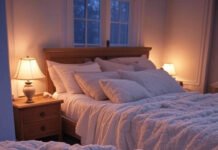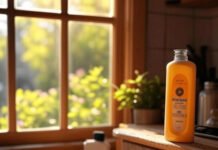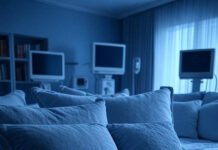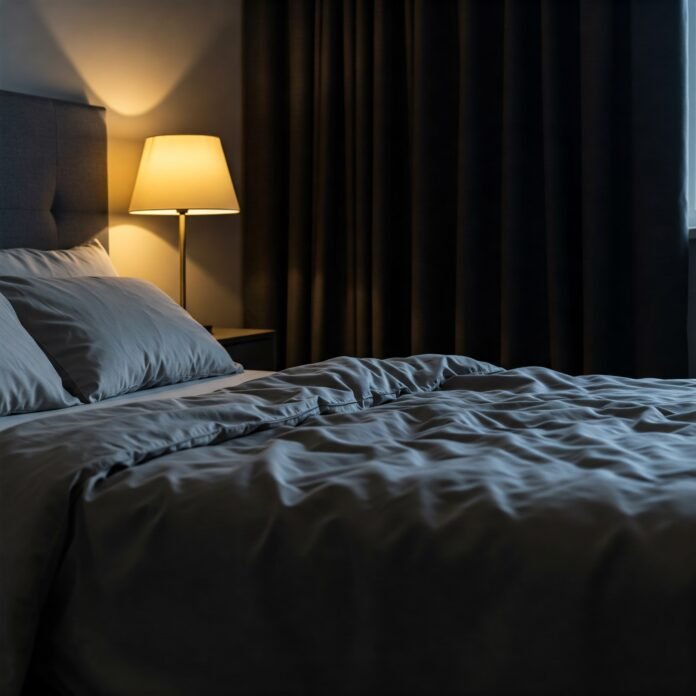Do you often find yourself tossing and turning, staring at the ceiling, or waking up feeling less than refreshed? You’re not alone. In our fast-paced world, achieving consistent, quality sleep can feel like a luxury. But what if the key to unlocking truly restful nights isn’t just about when you go to bed, but where you do it? This is where the power of sleep hygiene comes in – specifically, mastering your sleep environment. Optimizing your bedroom space is one of the most impactful steps you can take towards better sleep health. It’s about transforming your bedroom from just a room into a dedicated sleep sanctuary that actively supports your body’s natural rest processes. Let’s dive into how you can create the perfect setting for snooze success.
Why is Sleep Hygiene and Your Environment Crucial?
Our bodies are hardwired to respond to environmental cues. Light tells us to wake up, darkness signals it’s time to wind down. Temperature affects our comfort, and noise can be a major disruptor. Think of your bedroom not just as a place with a bed, but as a critical component of your overall sleep health strategy.
A poor sleep environment can counteract even the best intentions for sleep hygiene. Trying to sleep in a room that’s too bright, too noisy, too hot, or uncomfortable is like trying to swim upstream – you’re fighting against the current. Conversely, a well-optimized space works with your body, making it easier to fall asleep faster, stay asleep longer, and experience more restorative sleep cycles. Research consistently shows a strong link between environmental factors and sleep quality.

Key Pillars of a Perfect Sleep Environment for Optimal Sleep Hygiene
Creating your ideal sleep space involves paying attention to several interconnected factors. Let’s break them down:
Temperature Control for Sleep Hygiene
The ideal temperature for sleep is cooler than what most people keep their homes at during the day. Most sleep experts recommend a temperature between 60-67°F (15-19°C). Why cooler? As you prepare for sleep, your body temperature naturally drops. A cool room helps facilitate this internal cooling process, signaling your body that it’s time to rest.
- Actionable Tip: Experiment within this range to find what’s most comfortable for you. Use a thermostat, ceiling fan, or open a window slightly (if safe and quiet) to maintain the temperature. Avoid cranking up the heat or AC just before bed.
Blocking Light for Better Sleep Hygiene
Light is the most powerful cue for regulating your circadian rhythm, your internal body clock. Even small amounts of light can disrupt melatonin production, the hormone that makes you feel sleepy. Your bedroom should be as dark as possible.
- Actionable Tips:
- Invest in blackout curtains or blinds.
- Cover or remove electronics with bright LED displays.
- Avoid using screens (phones, tablets, TVs) in the hour leading up to bedtime. The blue light they emit is particularly disruptive. (Outbound Link Placeholder: Link to a reputable source on blue light and sleep).
- If you must use a nightlight, choose a dim, red-toned one, as red light is less disruptive to melatonin.
Sound Management in Your Sleep Environment
Silence isn’t always necessary, but consistent sound is better than unpredictable noise. Sudden loud noises (traffic, barking dogs) can easily wake you up. The goal is to minimize disruptions and create a calming soundscape.
- Actionable Tips:
- Use earplugs if necessary, especially if you live in a noisy area.
- Consider a white noise machine, fan, or app to create a steady, masking sound. This can help block out sudden noises and create a soothing atmosphere.
- Ensure windows and doors are well-sealed to reduce external noise.

Prioritizing Comfort for Sleep Hygiene
Your mattress, pillows, and bedding are foundational to physical comfort, which is vital for uninterrupted sleep.
- Mattress: Should provide adequate support for your spine while cushioning pressure points. There’s no one-size-fits-all; test different firmness levels.
- Pillows: Should support your head and neck in a neutral position, aligned with your spine. This depends on your preferred sleeping position (side, back, stomach).
- Bedding: Choose breathable fabrics (like cotton or linen) that regulate temperature and wick away moisture. Ensure your bedding is clean and comfortable.
- Actionable Tip: Assess the age and condition of your mattress and pillows. Are they still providing support? Is your bedding comfortable and suitable for the season? Don’t underestimate the impact of comfort on sleep quality.
Air Quality’s Role in Your Sleep Environment
Fresh, clean air contributes to easier breathing and a more comfortable sleep environment. Stuffy or polluted air can be irritating and disruptive.
- Actionable Tips:
- Ensure good ventilation. Open a window slightly if air quality and noise outside permit.
- Consider an air purifier if you have allergies or live in an area with poor air quality.
- Dust and vacuum regularly to reduce allergens.
- Avoid strong scents from air fresheners or perfumes in the bedroom.
Integrating Rituals with Your Sleep Environment for Comprehensive Sleep Hygiene
Creating the perfect physical space is powerful, but combining it with consistent habits takes your sleep hygiene to the next level.
The Importance of a Consistent Sleep Schedule for Sleep Hygiene
Going to bed and waking up around the same time every day, even on weekends, helps regulate your body’s internal clock. This 1 consistency reinforces your natural sleep-wake cycle. 2
- Actionable Tip: Try to stick to within an hour or two difference on non-workdays. This consistency is a cornerstone of effective sleep hygiene.
Crafting a Relaxing Pre-Sleep Routine for Sleep Hygiene
Transitioning from the day’s activities to sleep mode is crucial. A relaxing routine signals to your body that it’s time to wind down.
- Actionable Tips:
- Spend the last hour before bed engaged in calming activities: reading a physical book, taking a warm bath, listening to quiet music, gentle stretching, or meditation.
- Avoid stimulating activities like intense exercise, work, or stressful conversations.
- Limit caffeine and alcohol, especially in the hours leading up to bedtime. (Outbound Link Placeholder: Link to information on how caffeine and alcohol affect sleep).
The Digital Detox and Your Sleep Environment
We mentioned blue light earlier, but it deserves emphasis. Using electronic devices in bed is a major sleep environment no-no. The light suppresses melatonin, and the content can be stimulating, keeping your mind active.
- Actionable Tip: Designate your bedroom a “screen-free zone.” Charge your phone outside the bedroom or across the room, and use a traditional alarm clock. This reinforces the idea that the bedroom is for sleep (and intimacy) only.
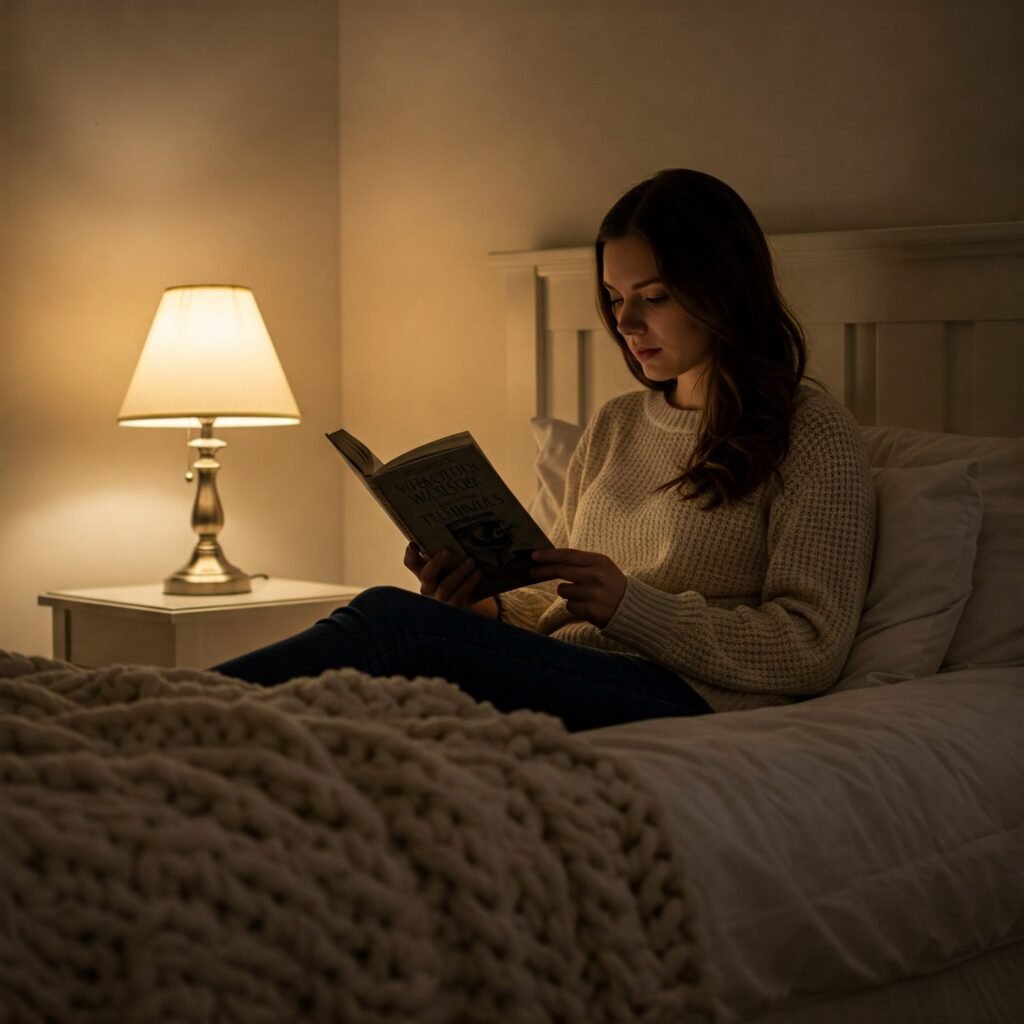
Taking Action: Steps to Improve Your Sleep Hygiene and Environment
Improving your sleep environment doesn’t require a complete bedroom makeover overnight. Start small and make gradual changes.
- Assess Your Current Environment: Walk into your bedroom. What do you notice about the light, sound, temperature, and comfort? What could be improved?
- Prioritize: Choose 1-2 areas to focus on first (e.g., getting blackout curtains, setting a cooler thermostat).
- Make Changes: Implement your chosen improvements.
- Observe: Pay attention to how these changes affect your sleep. Keep a sleep diary if helpful.
- Adjust and Repeat: Based on your observations, make further adjustments and tackle other areas of your sleep environment.
Creating an optimal sleep environment is a continuous process, but the effort is well worth it. Better sleep doesn’t just mean feeling less tired; it impacts your mood, concentration, immune system, and overall quality of life.
(Outbound Link Placeholder: Link to a major sleep foundation or health organization website homepage or sleep hygiene section)
Conclusion
Your bedroom environment plays a profound role in your ability to get quality rest. By consciously addressing factors like temperature, light, sound, and comfort, and by integrating these with consistent sleep hygiene habits like a routine and schedule, you are building a foundation for truly restorative sleep. Don’t underestimate the power of your physical space. Start today by making one small change to transform your bedroom into the sleep sanctuary you deserve. Your body and mind will thank you for it with deeper, more rejuvenating sleep night after night.




















